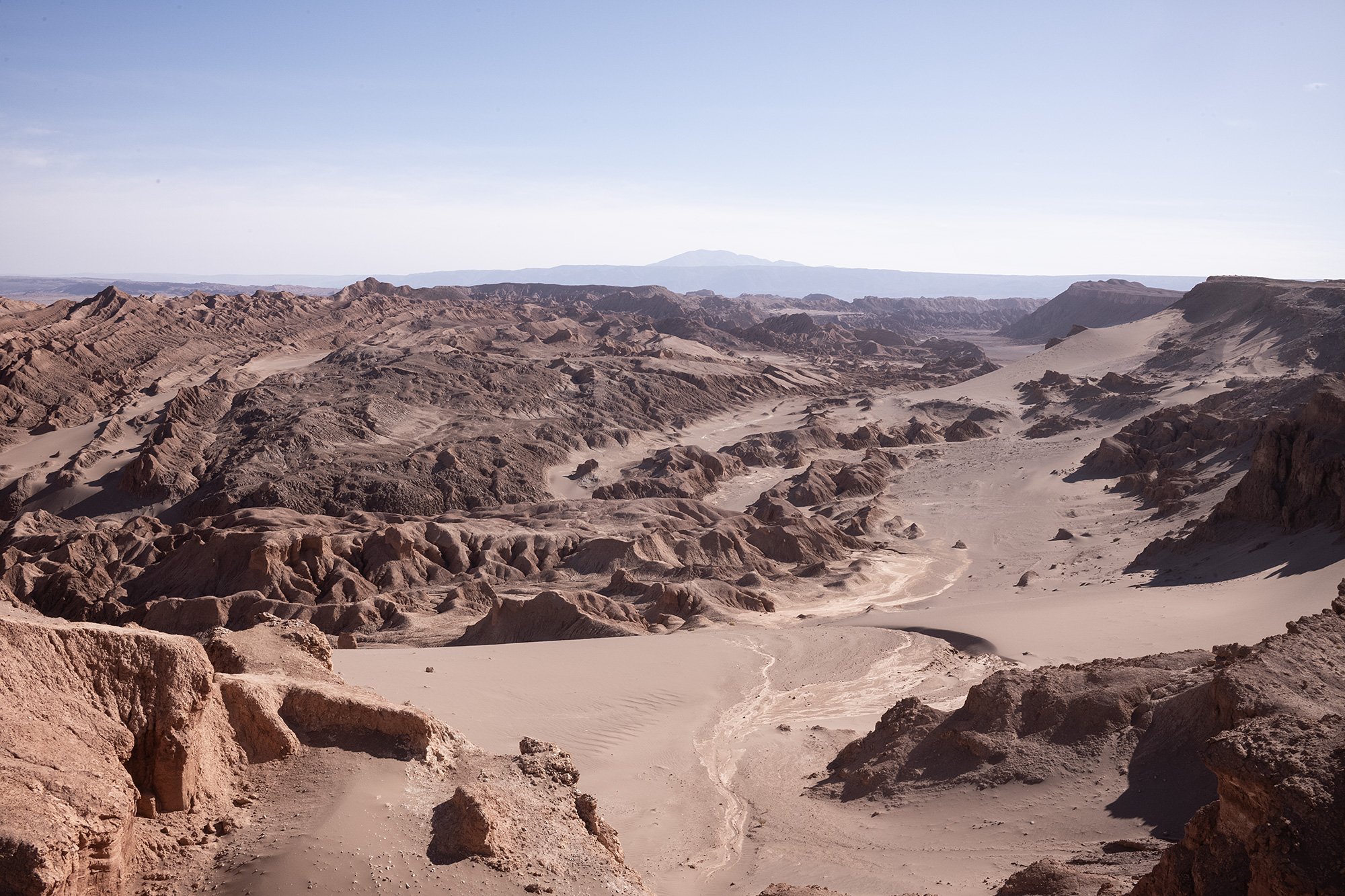
Atacama chapter four
Horseback, high winds, and our final excursion.
Nacho stops me the afternoon before to talk about my plans for the next day. Winds have picked up in the afternoon and there are high wind warnings for Cerro Toco the next morning with gusts of 100km/hr predicted. We’ll have to update the plan.
I mention that our trip to Domeyko had been aborted and suggest that as an option for the morning. Nacho agrees. I had originally planned a horseback riding excursion in the afternoon and we keep that on the agenda.
In the evening my plans shift again. Winds are predicted in the afternoon and for the safety of the horses my schedule is upended. Instead, I’ll go on a horseback tour in the morning and hike the canyon in the afternoon. It all sounds good to me. I’m just happy to be here.

The day begins as usual with a briefing by the map of the desert on the wall of the lodge. We’ll be meeting our horses in the stables by the parking lot and riding them in a loop along the base of the nearby mountains before returning to the lodge.
It’s our guide’s last day at the Explora. She’s planning on returning to Santiago to work on a company she started eight years ago with a friend. Lately, her idea has been picking up steam and a lot of corporate clients are interested in the product. It’s time to refocus her energies on that.
At the stables, we’re taught how to lead the horses, what to do and what not to do. We’re asked not to take photos as we’re riding for our safety and for the safety of the horses. It’s understandable but I lament the photos I could have taken as we ride to the base of the mountains and back.


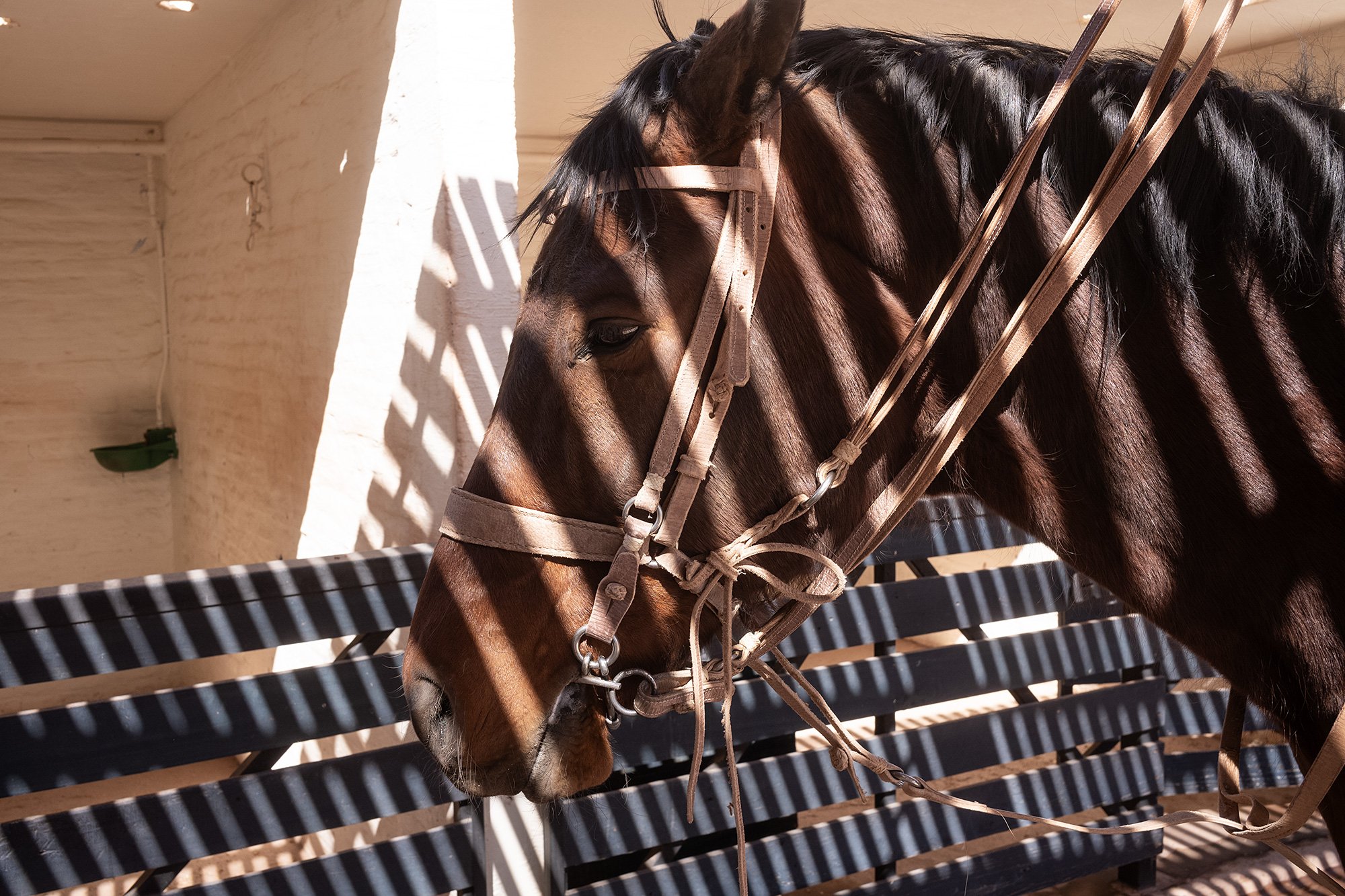
Back at the lodge, I thank Ventisquero, my horse and wish I had something to give him. He eyes me as I approach one last time to pet him on his neck before bidding adieu.
In the afternoon the winds return, with greater force. The dust obscures the nearby mountains and the wind lashes at the trees. All afternoon excursions are cancelled and once again I miss my chance to hike the Domeyko canyon. I spend my time hanging in the lodge chatting with a group of guides. I ask them about their plans for the future and how they came to work at the Explora.
There’s a substantial vetting process, beginning with an interview, an English test, and a psych evaluation. Once accepted, they then attend a three month course where they participate in the excursions and learn all about the flora and fauna of the area. On the hikes they’re to speak with one another and the senior guides in English. The evaluations are ongoing.
At the end of the three months they’re given a test of the flora and fauna, though they say that the personality and command of English are the most important parts of the evaluation process. They can always learn more about the flora and fauna.
I ask which Explora is the most difficult to guide in. Nacho immediately says Torres del Paine. They’d easily walk over 100km a week on average.
He asks me what I’d like to do the next day. I ask about summiting Cerro Toco. He checks the weather; high wind warnings are still in effect. I elect to do a longer hike from the base of a canyon up to its ridge and alongside it. It’s my last day and I want to stretch my legs. I’ve also pushed my flight back so that I have the entire day to spend in Atacama; Maria has graciously allowed me a late checkout.
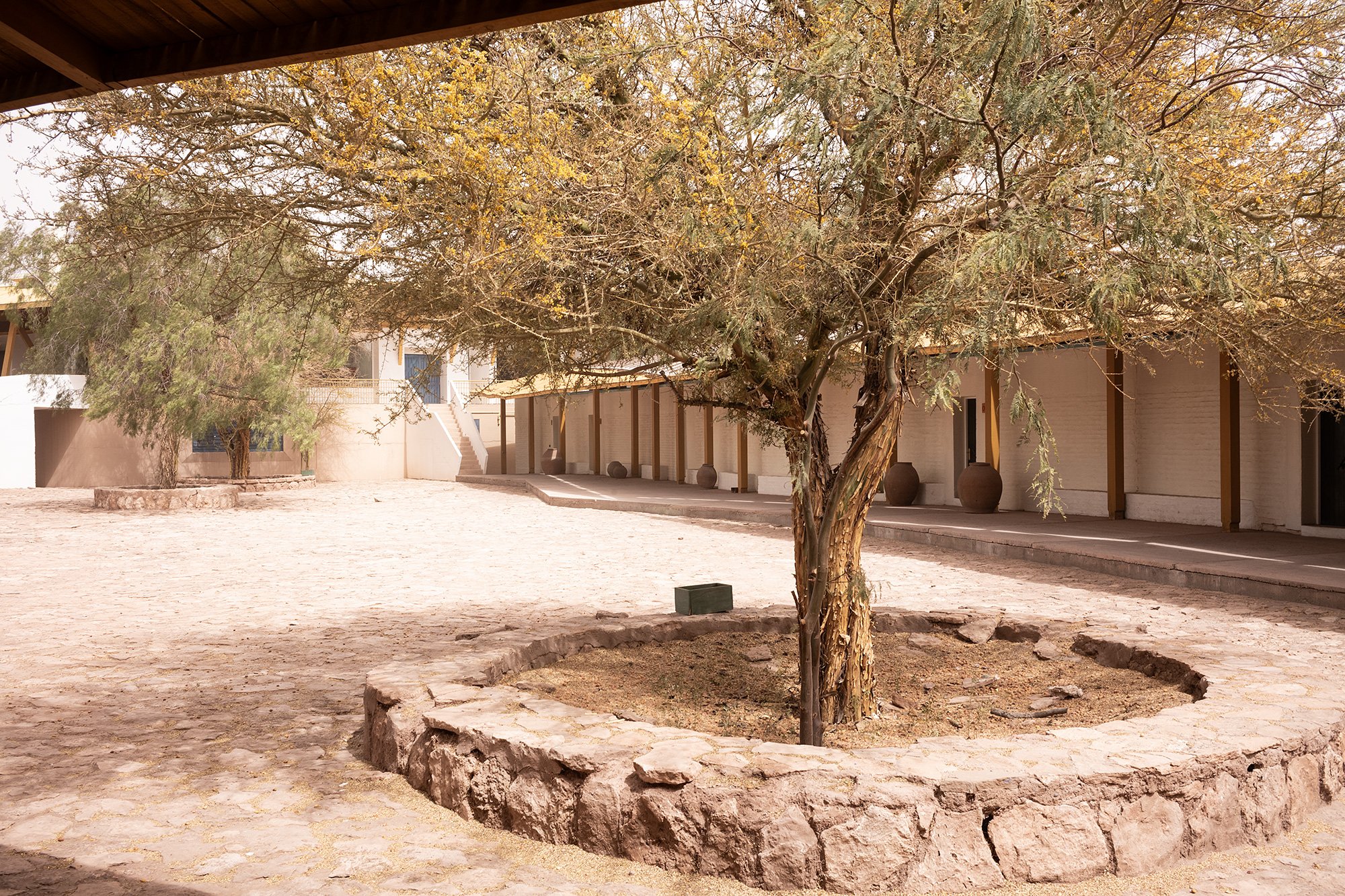
Nacho asks me what I’d like to do the next day. I ask about summiting Cerro Toco. He checks the weather; high wind warnings are still in effect. He offers me many options and after a lot of second-guessing I elect to do a longer hike from the base of a canyon up to its ridge and alongside it. It’s my last day and I want to stretch my legs. I’ve also pushed my flight back so that I have the entire day to spend in Atacama; Maria has graciously allowed me a late checkout.
•
The next morning I meet Tamara by the map.
It’s just the two of us for the day. She points out the route we’re going to take to the trailhead and explains the hike. We’ll be walking through a tunnel and then climbing up to the rim of the canyon after which we’ll hike along it for a few kilometers before slightly descending to meet the car. And with that we’re off to meet Paola. Today she’s in a jeep.

We drive north out of town to the trailhead. Approaching the entrance to the access road we find it barred. Tamara heads to the office to pay our entrance fee but there’s no one there. A sign announces that the trail is closed due to high winds, but the day is clear and the wind has abated.
She returns to the car and asks me what I’d like to do. I ask her to make a decision for me but she tells me it’s my last day and I should choose. I go back and forth on a few options and then ask to do the ‘rainbow’ canyon in the south, Domeyko. I’ve been foiled twice in my attempts to visit it; perhaps the third time is the charm. Tamara asks me if I’m sure, which makes me second guess my decision, but ultimately I say yes. We head back to the lodge to arrange it.


Too late I realize we’re driving north. The sun is shining through the passenger window and I ask Tamara where we’re heading. She tells me we’re heading north to the rainbow mountain; our signals got crossed. She asks if it’s ok and I tell her it is. She asks me if I’m sure it’s ok and I laugh and tell her that it’s the third time I’ve attempted to go to Domeyko and failed. Clearly, the Atacama desert does not want me to visit that place.




We continue driving north on the highway; guanaco look up from where they graze to watch us as we pass. We turn onto a dirt road and soon are in a small canyon where a herd of llama have collected. Tamara tells me there’s a woman who minds them. She must be somewhere in the hills.
Soon we arrive at the canyons. It’s cold and windy; we are at altitude. I ask how long the hike will be and Tamara tells me it’s short. We bundle up and walk amongst the rocks. It’s a beautiful geological spot, made more so by the colors that the different minerals have given to the mountains themselves. And while it doesn’t have the same feel as the rainbow mountains of Peru, it’s possessive of its own charms.

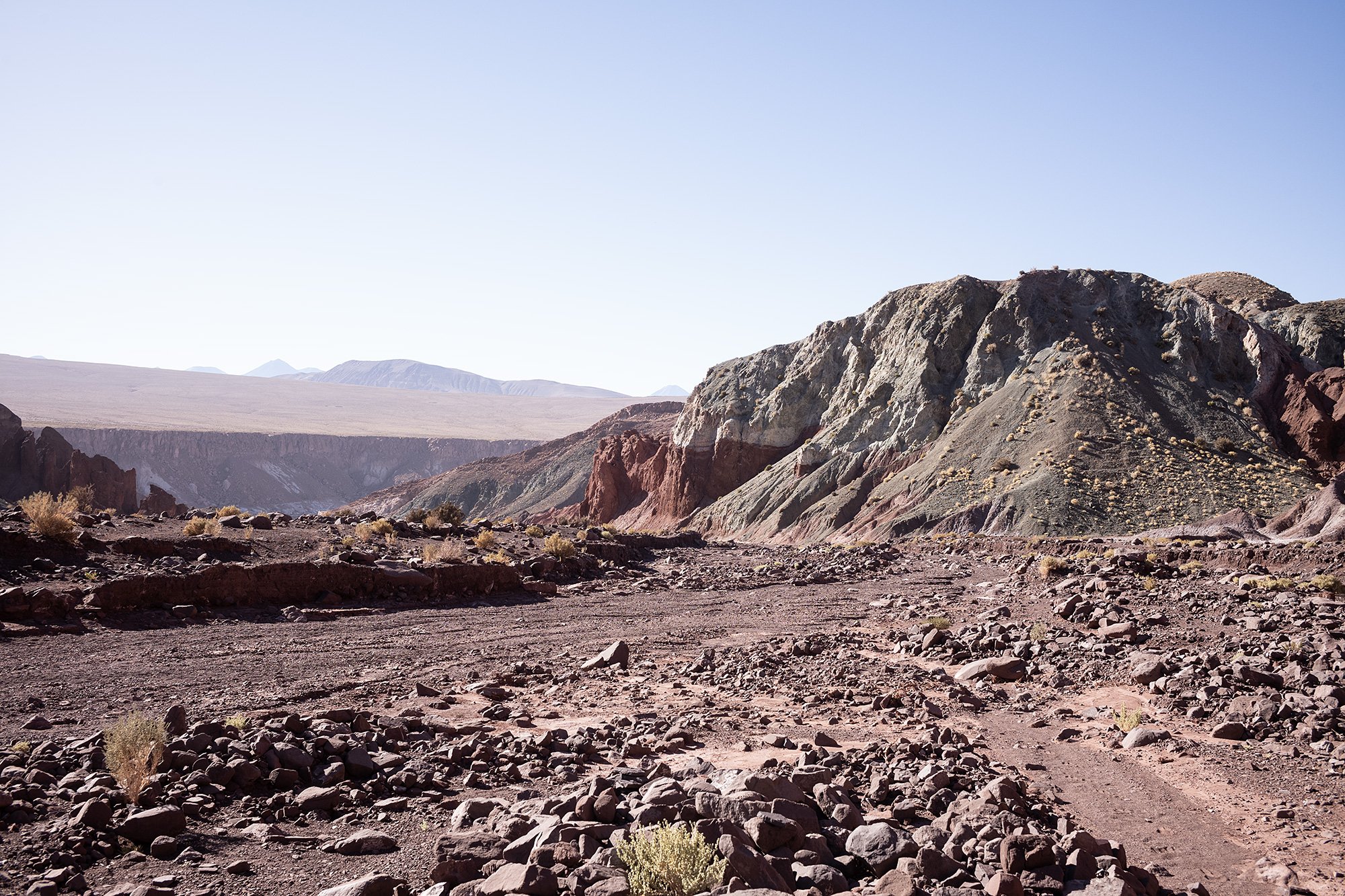





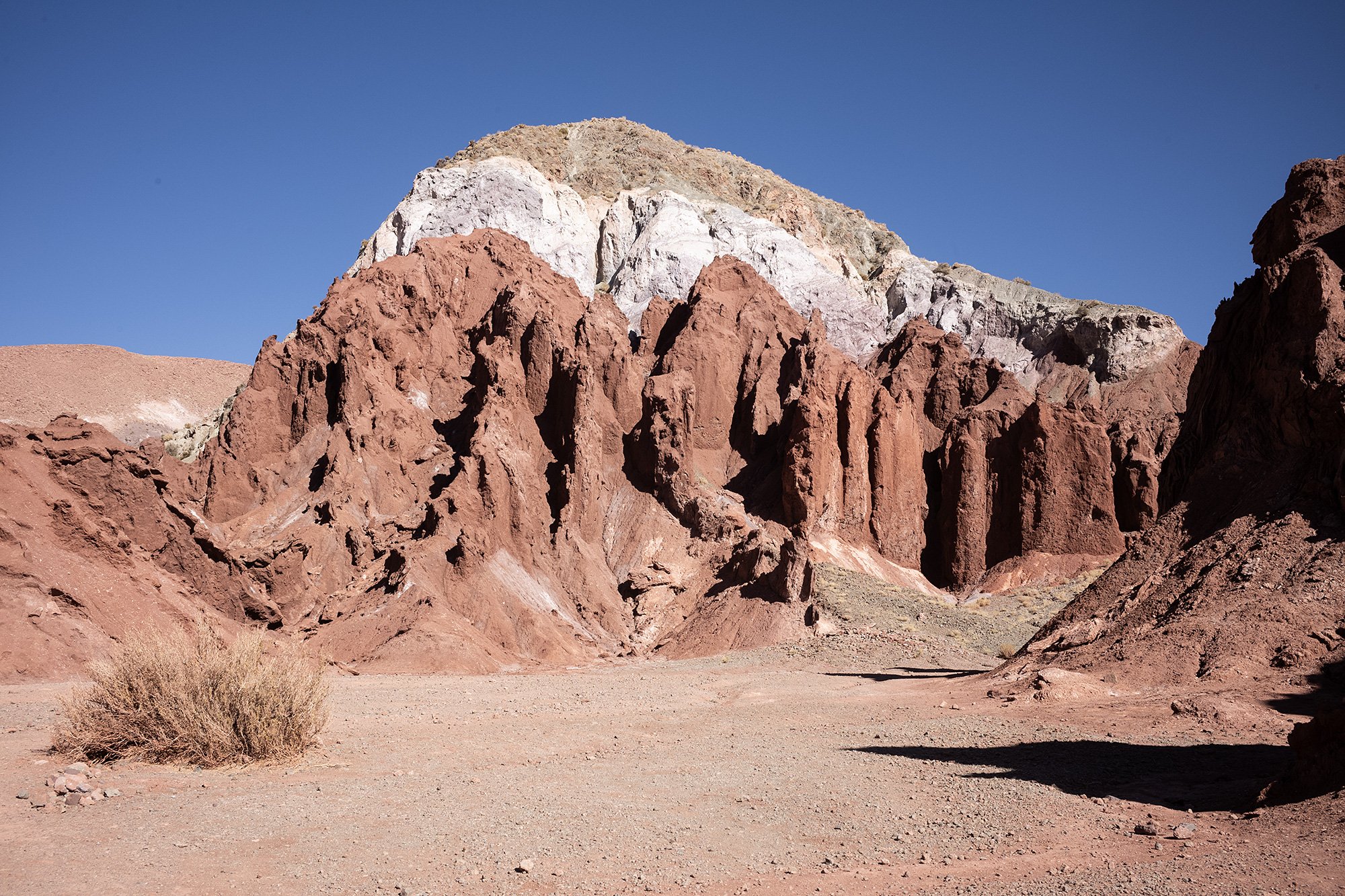
It’s a short downhill hike along the floor of the valley and Tamara describes the rock and clay around us. She shows me how brittle some of the rocks really are and points out roots that have spread through the clay, binding it together along with the veins of gypsum that runs through the mountains.

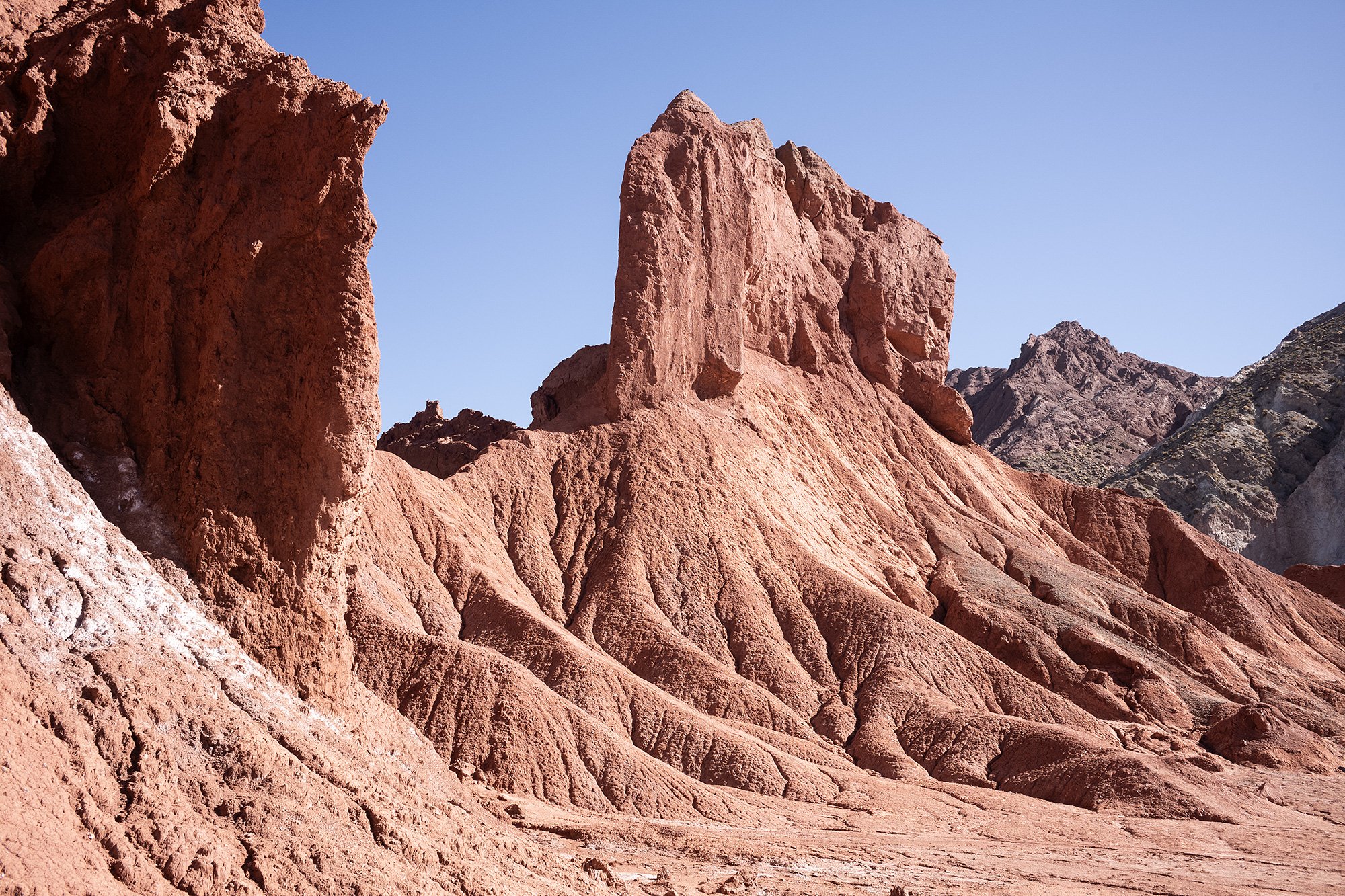
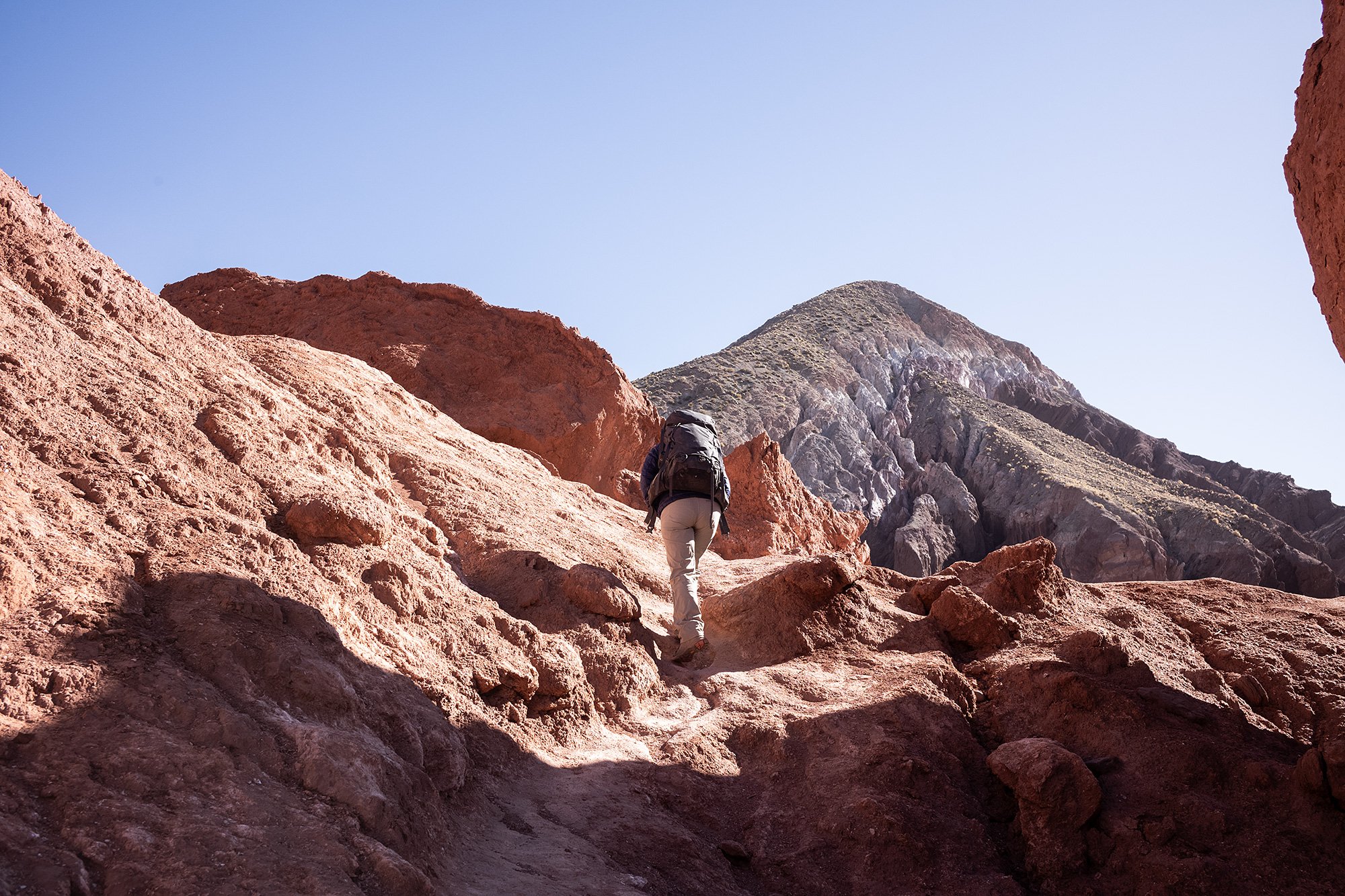


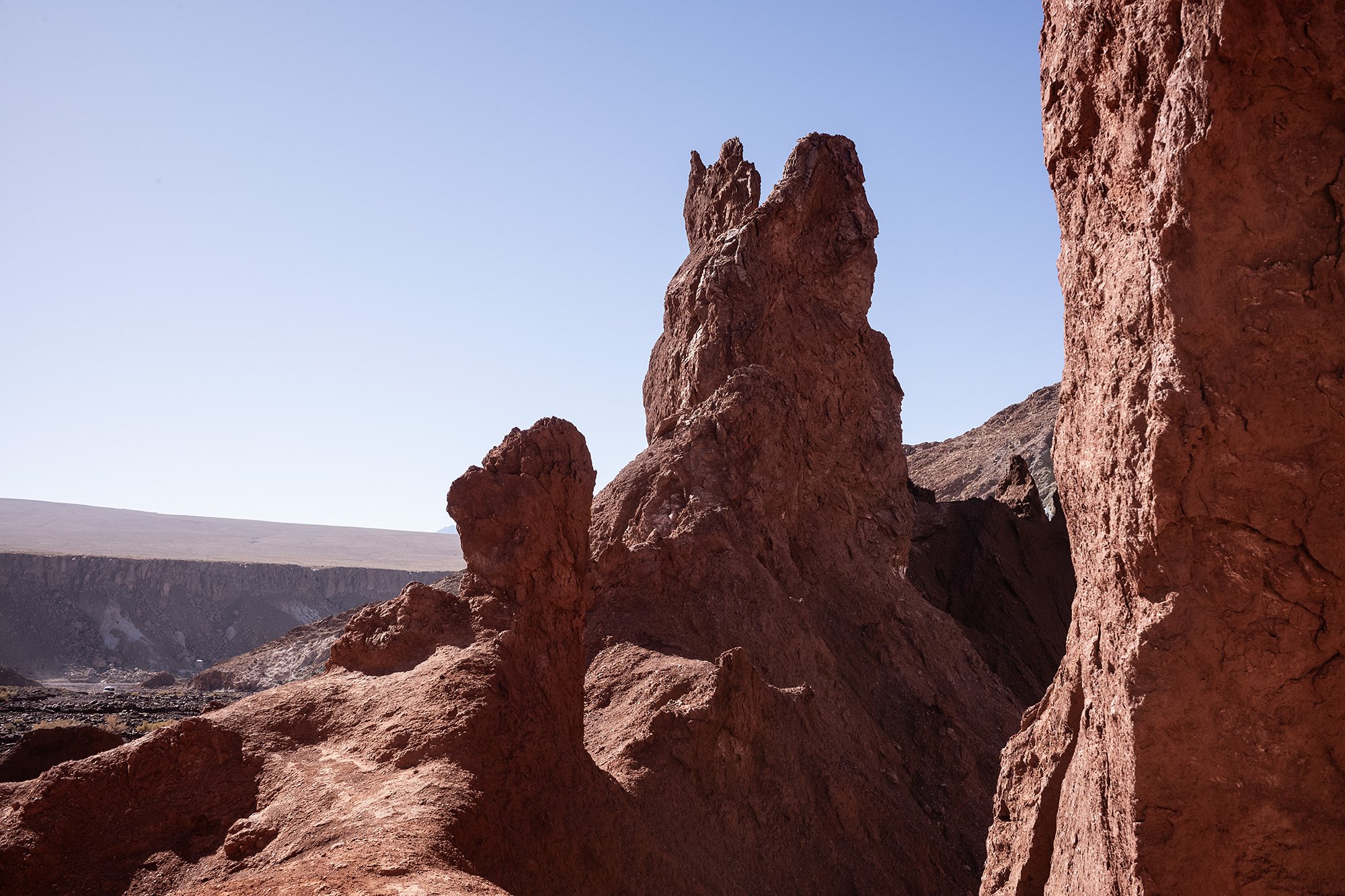



Back in the car we drive back south towards an outcropping of rock noted for the myriad number of petroglyphs etched into and painted on the surface. The rock served as a way point for people traveling across the desert and many stopped on their way going in either direction. She tells me that there are petroglyphs on all the nearby rocks but the locals only allow people to visit these.
She leads me around the rocks, pointing out various forms and tells me that the older petroglyphs are actually the ones that are more expressive. Later ones have become more simplified.
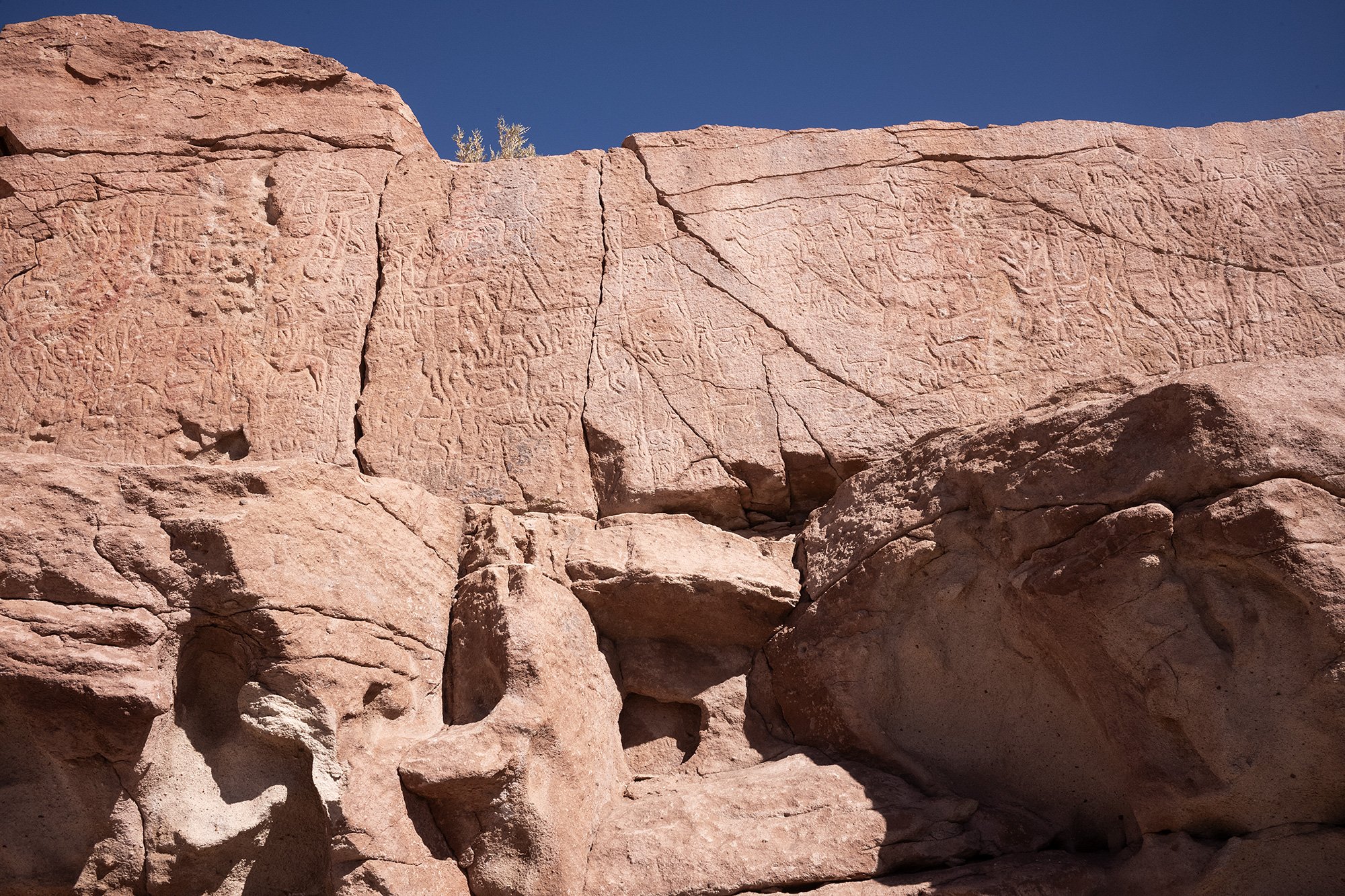


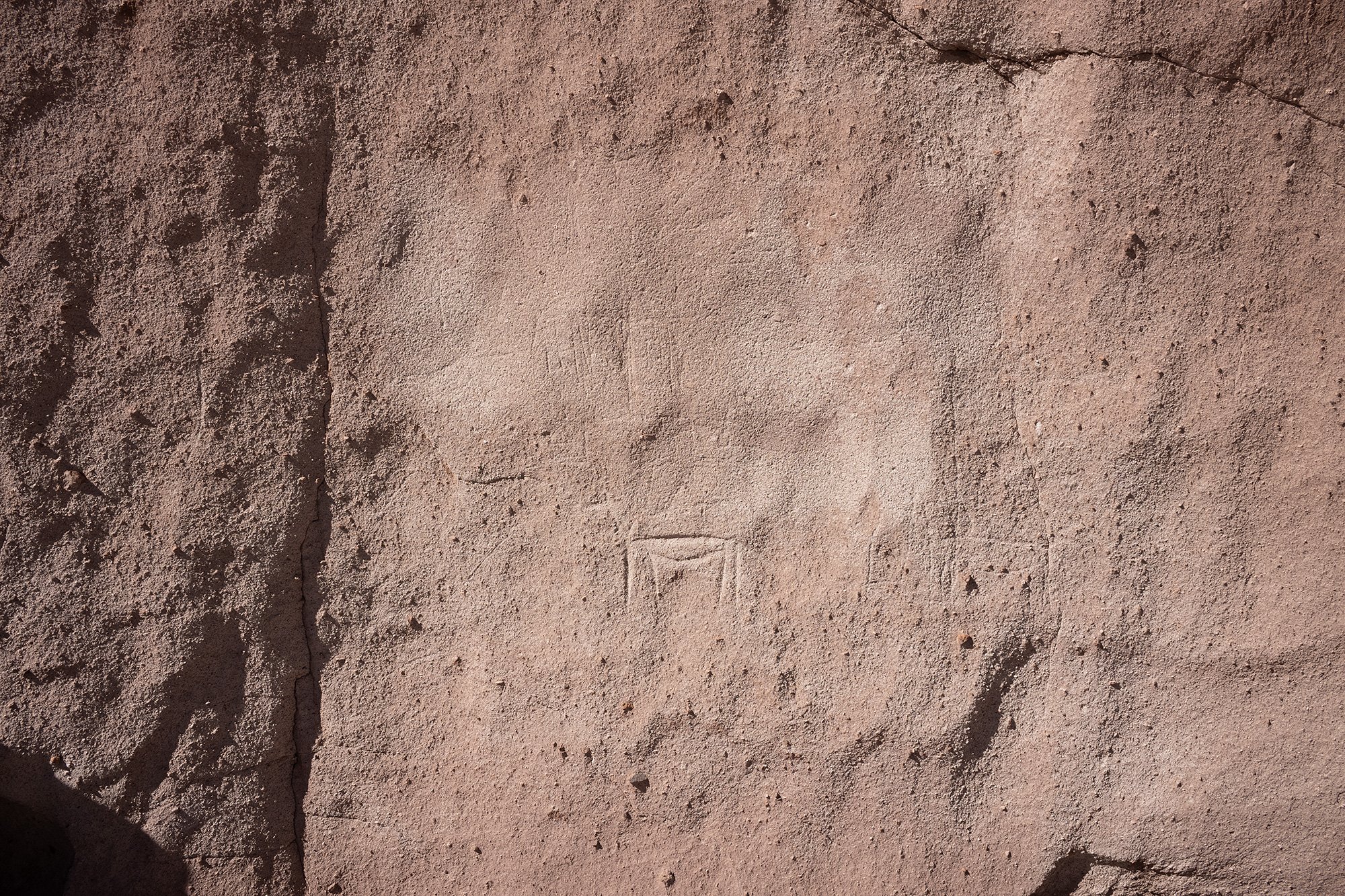

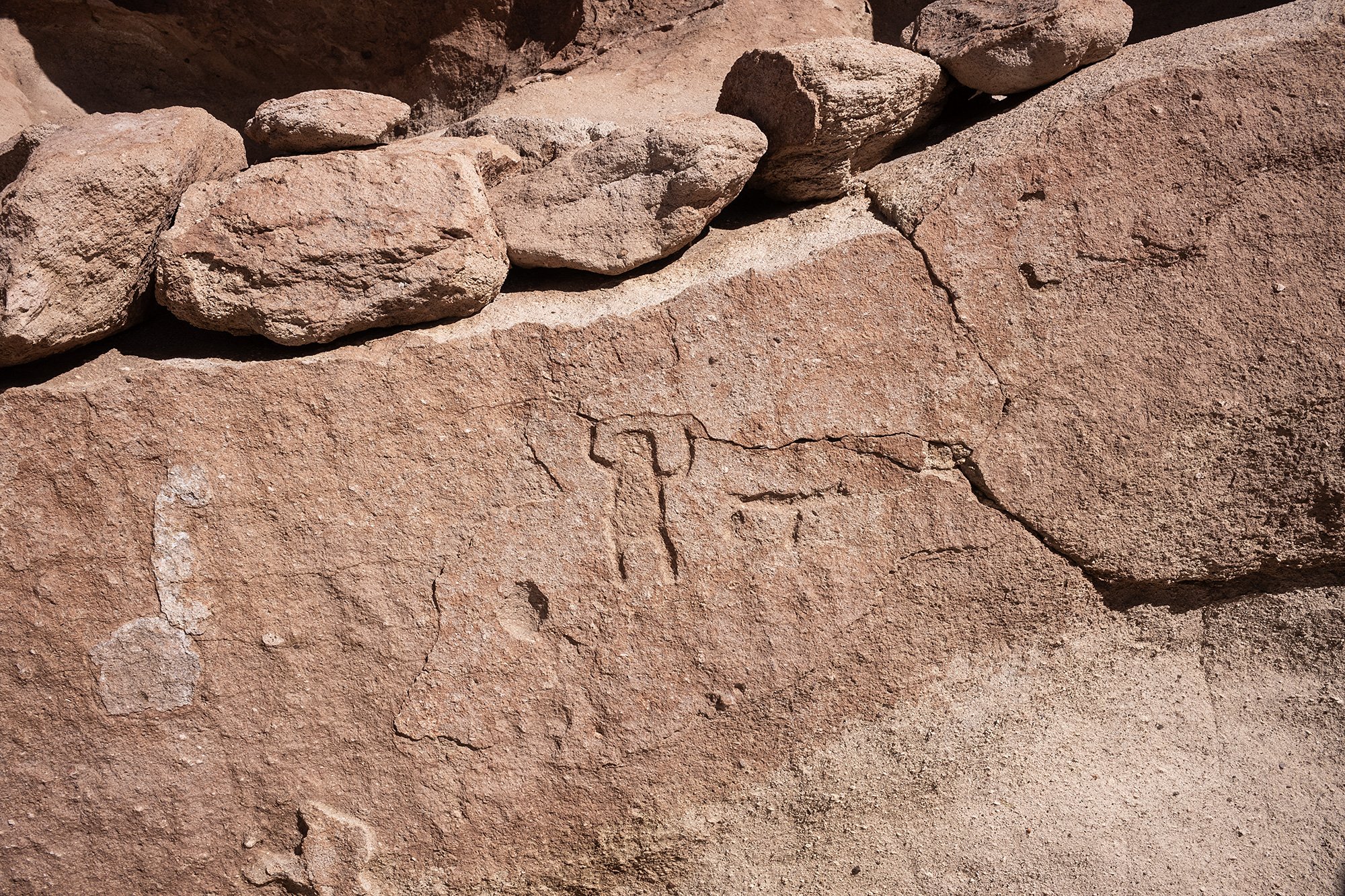
Pausing by one Tamara explains that it could represent ancient ideas of the cosmos. She tells me it could depict animals crossing the Milky Way: early signs of humans wanting to make sense of the stars and dreaming up their own constellations.


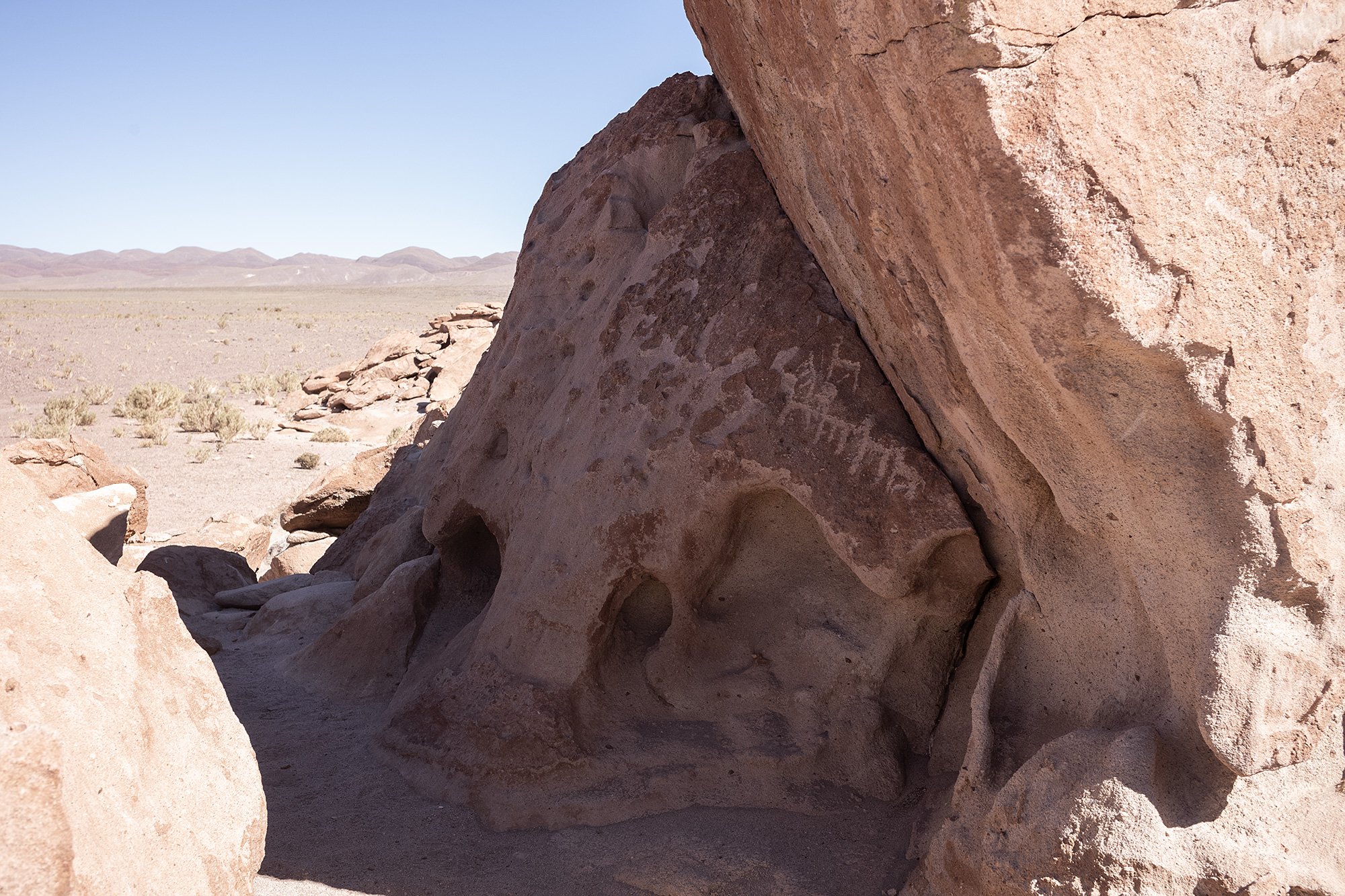
She pauses also to point out a double-headed llama, one of the most famous petroglyphs at the Yerbas Buenas site. One looks up at the sky while one looks to the ground. There’s a number of interpretations to the duality of the figure. An artist has made their own version in the desert; Tamara had pointed out the location as we drove past but she herself has yet to visit the site.

Just beyond she points out petroglyphs of a monkey and a dog. I ask her if she’s ever been to the Nasca lines in Peru. They bear a striking resemblance.


On the drive back to the lodge I ask Tamara about what it’s like living at the lodge. She tells me she’s one of two people who cooks the most. She tells me she’s planning on making burgers with brie tonight and invites me to dinner; unfortunately, it’s my last day. A car is picking me up at 17h to head to the airport. Next time, she tells me.
She tells me she doesn’t love to cook; it’s more that she gets an idea in her head and wants to eat it so she has nothing to do but cook. She tells me she had recently made empolvado and will make sure to drop some off for me before she sets off on her next excursion. The dulche de leche she used was made with goat milk; she wonders if I’ll notice the difference.
She asks me how my day was and I tell it was fantastic. Really? she asks. She’s skeptical since our plans had changed and then changed again, inadvertently. I tell her yes. I loved it. I tell her I’m lucky to have the opportunity to visit the desert and I’m happy to see whatever the desert decides to show me.

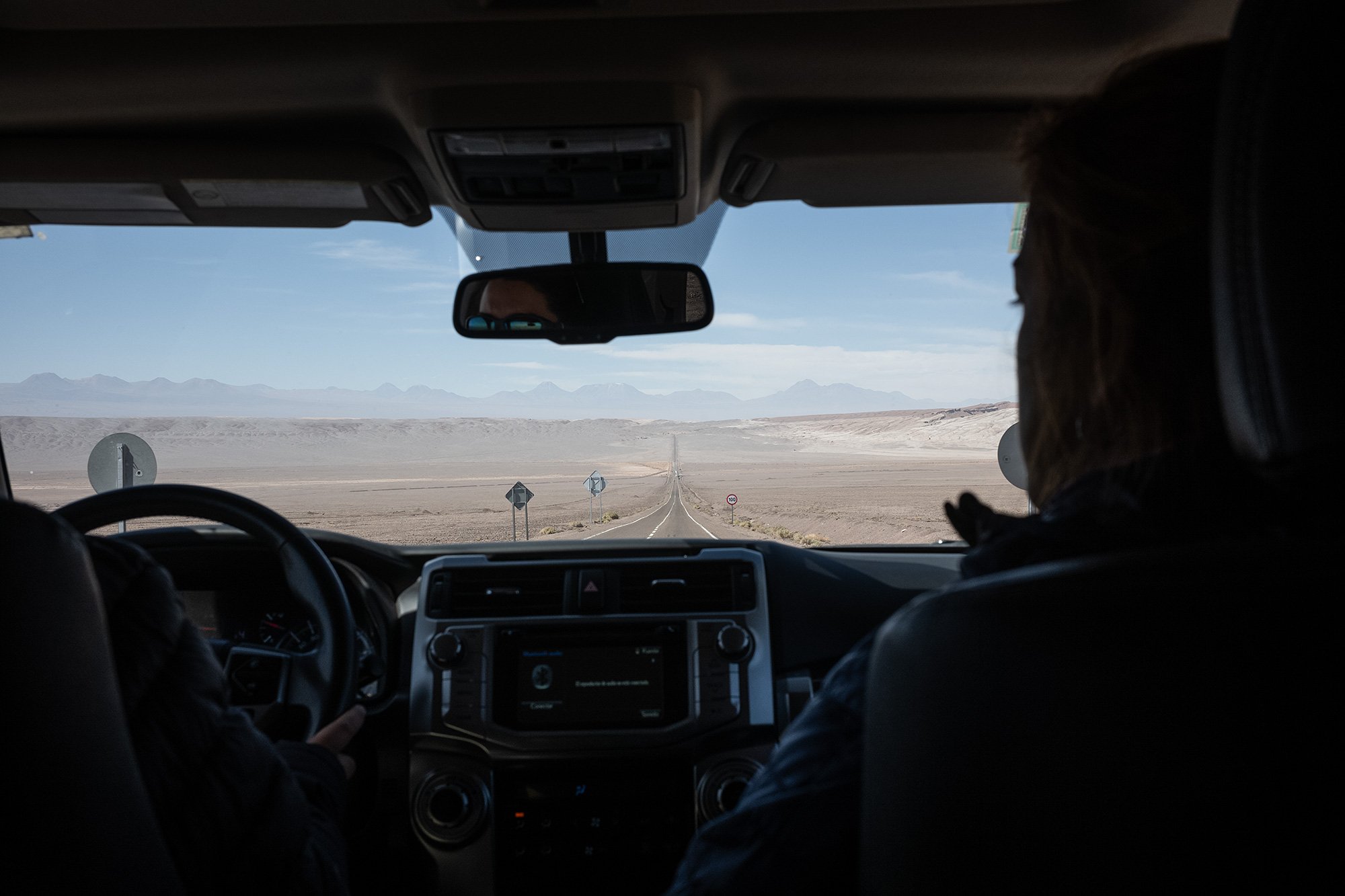
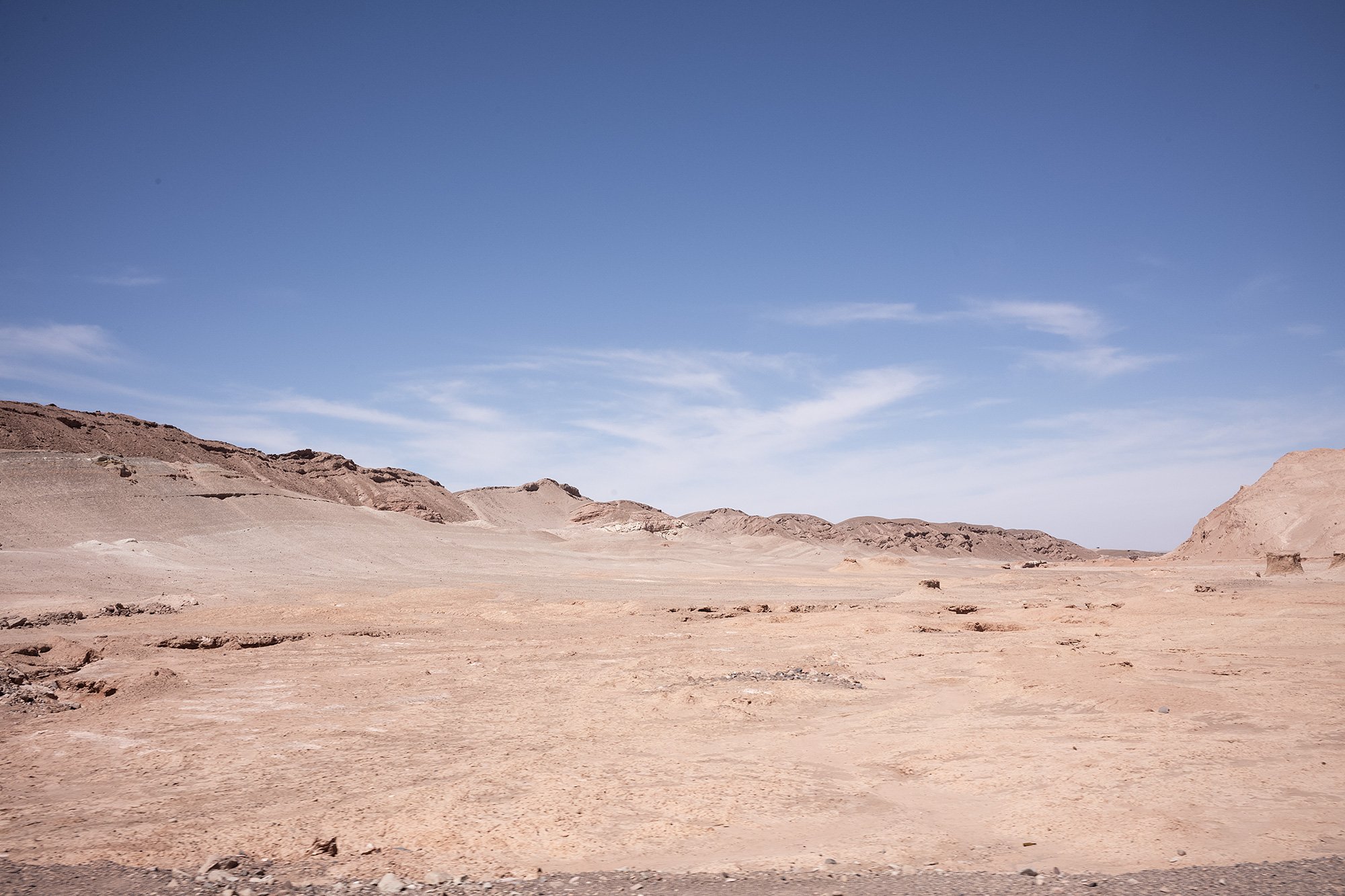
In the afternoon I take a quick trip into town to mail a postcard and buy an empanada. Tamara had pointed out a shop and asked if I had had one. She offers to stop to pick one up but it’s getting late and I want her and Paola to have some time off between their morning and afternoon duties. It turns out I go to the wrong stand, but the empanada is still tasty and filling.

In the few hours I have left I take a moment to enjoy the hot tub before showering and checking out. Tamara has left a bag for me at the front desk and I order a glass of sparkling wine and find a spot to enjoy my first empolvado. It’s delicious. The goats milk gives the dulce de leche a distinct flavor that’s neatly offset by the powdered sugar and the cakes.
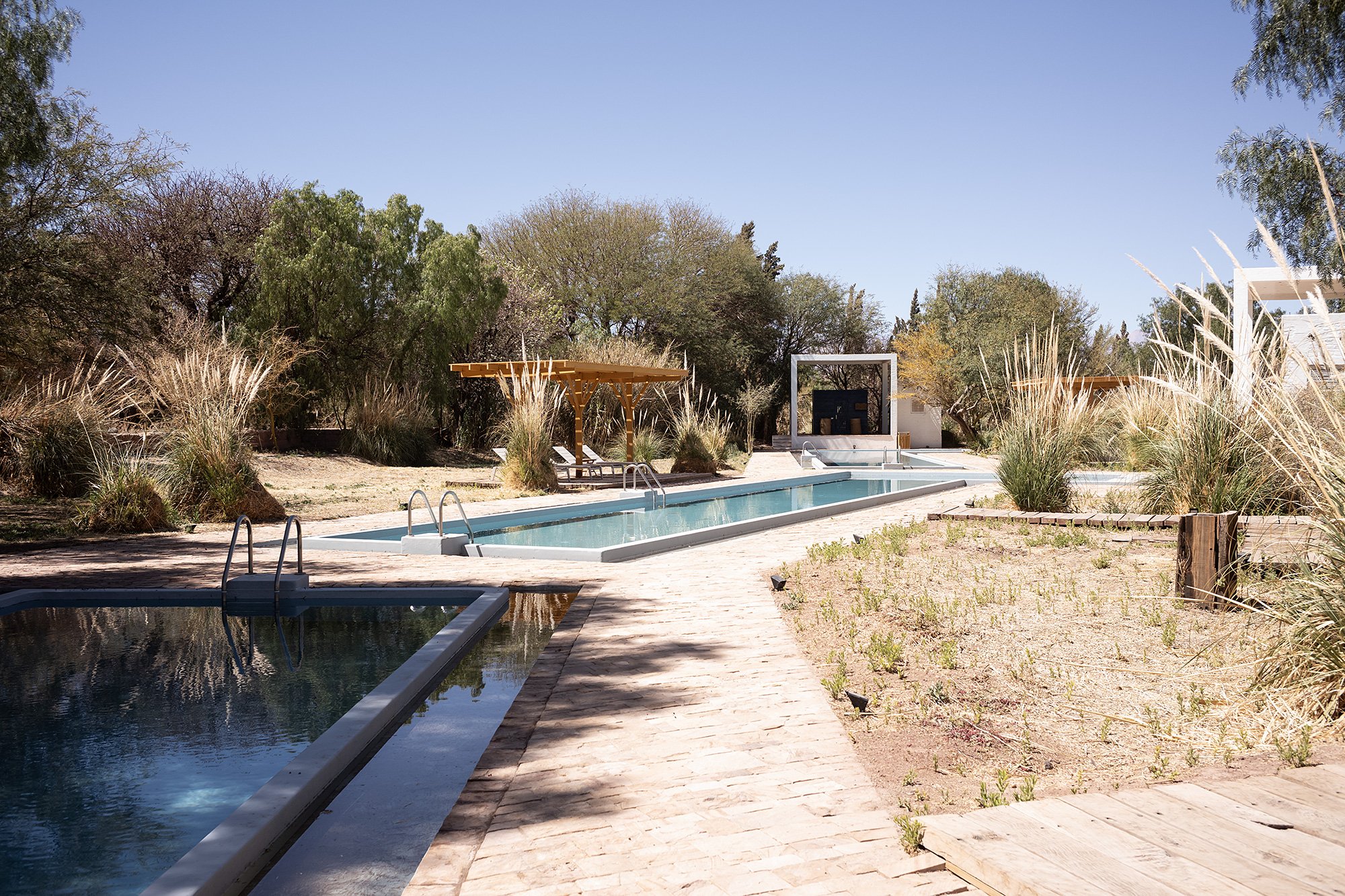

And then it’s time to leave. I bid adieu to Mackarena and Isidora at the front desk; Nacho walks me to the car. I’m surprised to find myself getting emotional over my departure. It’s been a great five days and I’m thankful for all the people who have shared a small part of their lives with me over the long weekend: the guests, the staff, and the guides.
As we drive up out of San Pedro de Atacama I ask the driver to stop at a lookout. Nacho had suggested I do so to have one last look at the desert before I leave, a keepsake to hold onto before I return.
4 September 2023
🇨🇱
